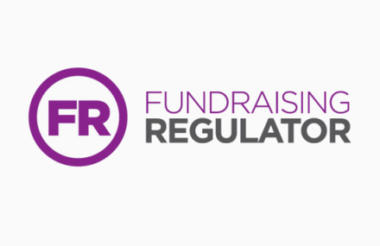The Fundraising Regulator’s board has published its vision for the much-debated Fundraising Preference Service today. While it may be simpler for the donor (and regulator), it’s not really a fundraising-specific service at all, writes Hugh Radojev.
The board of the Fundraising Regulator has today published its decision on the Fundraising Preference Service. In its statement, the regulator said its board reached its decision after reviewing the proposals put forward by George Kidd’s working group in August, as well as responses from the sector as part of the month-long discussion period in September.
The proposals from the working group stressed a need for any FPS model to “have its own definition of what constitutes a ‘fundraising communication’, based on communications where the core purpose is to raise funds”, and called for a charity – once notified a supporter had signed up for the FPS – to be able to contact them once, by mail, to check they actually did want to suppress communications from that organisation.
While the group’s model effectively offered the public a chance to press ‘a big red button’ and put a blanket ban on receiving fundraising communications from any and all charities, the sector still took heart from the group’s more nuanced and ‘granulated’ approach to the FPS.
Seeking to define fundraising communication ‘would be difficult’
However the decision taken by the board has effectively stripped that granularity away – from the charities at least. The board said that this approach “would not cover all types of charity and communication and would carry the risk that donors would not be clear about what the system offers”.
The board also said that “seeking to define a communication with the ‘core purpose of fundraising’ would be difficult and might lead to inadvertent inconsistencies in judgement about what is or is not covered”.
Now, any individual who signs up to the FPS will be asked to signpost which charities they want to stop hearing from. While this may well be simpler and cleaner than the working group’s proposals, it effectively means that this is no longer a Fundraising Preference Service.
It’s basically a Charity Preference Service, catered almost entirely towards the public, which seems to effectively be just a combination of both the TPS and MPS – both existing services which levy-paying charities are already paying money for and, are forced to check lists against.
Speaking to Civil Society News, both Stephen Dunmore and Gerald Oppenheim confirmed that it had attempted to define what a purely fundraising communication was, but ultimately found it too difficult.
“It was difficult for us to define what a purely ‘fundraising communication’ would be. Everybody knows that’s a difficult thing to do,” said Oppenheim. “It’s obvious if it’s something that says ‘please donate’. But if it’s just a newsletter with a small opportunity to donate in a wider document, then it gets quite complicated to decide whether that’s a fundraising communication or not.”
No one was ever in any doubt that this was going to be a difficult thing to do, but this is the Fundraising Regulator. The regulator of all fundraising. It’s not good enough for them to say that it was too “difficult” to come up with a working definition of what represents a fundraising communication, so they just didn’t bother.
If the people tasked with regulating fundraising can’t define what fundraising is, how can they be trusted with overseeing it?
Where does the TPS/MPS end and the FPS begin?
The regulator says that the FPS will cover “all forms of contact with a named individual” including telephone, text, email and mail. The question has been – since the Etherington Review was first published and the FPS first emerged – what will the FPS do, that the existing services can’t? Why is it necessary?
The FPS as originally envisaged was always in danger of overlapping on TPS and MPS anyway. Now, stripped of its fundraising communication focus, it seems to be, at best, an easy way for the public to suppress all communications from specific charities. At worst, it's another unnecessary piece of red tape foisted upon the voluntary sector specifically, and not on anyone else.
When asked how the FPS, in its current form, will sit alongside current TPS and MPS, Civil Society News was referred back to the Cross-Party review.
Fallen at the second hurdle
When the regulator published its first adjudication report last week, we wrote that it hadn’t fallen at its first hurdle, even if it didn’t exactly exceed expectations.
The second hurdle was always going to be the FPS. One of the key recommendations of the Etherington Review that gave birth to the regulator in the first place, the FPS has been the topic of huge debate for well over a year.
The ramifications of it on the sector are potentially huge, and the Fundraising Regulator owed it to the sector to pull out all the stops to ensure that it delivered a system that worked for everyone - the public and charities.
Instead, under the guise of making it simpler for the public, the Fundraising Regulator has clearly made the FPS simpler and easier to manage for itself. This focus on simplicity for the public and the regulator could well end up costing the regulated a lot of money, and that’s just in added costs to pay for its implementation – this without taking into account the cost in terms of lost donations.
It’s far too early to say that the FPS will fail, but the Regulator manifestly hasn’t delivered a ‘Fundraising’ Preference Service, whatever it chooses to call it. This is a service for the public first, the regulator second and the sector a very distant third.
Related Articles












